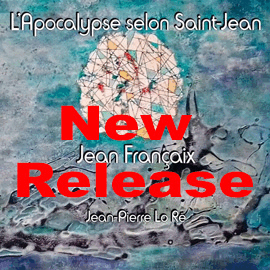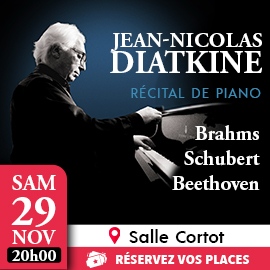Der belgische Pianist Florian Noack beginnt sein Programm mit eigenen Transkriptionen mit Bachs Konzert für 4 Klaviere in einer Bearbeitung, die ihm recht gut gelungen ist. Auch die Transkription von Mendelssohns Walpurgis-Nacht finde ich interessant, während ich bei Rimsky-Korsakovs Scheherazade Bedenken anmelden muss. Von dieser Komposition gibt es eine eigene Transkription des Komponisten für Klavier zu vier Händen, die das Orchestermaterial opulent zu Gehör bringt, während das Noack nicht so gut gelingen will. Er mag das selber festgestellt haben, denn er hat die Partitur nicht nur für Soloklavier bearbeitet, sondern sie auch um rund die Hälfte ihrer Spieldauer gekürzt.
Sehr gefällig ist die Johann Strauss-Paraphrase. Im Falle von Prokofievs Symphonie Classique muss man sich von gewissen Erwartungen lösen, denn Noack löst sich auch vom Original und geht nicht so sehr den ‘klassischen’ Weg als vielmehr den pianistischen. Er sucht nach pianistischem Mehrwert und findet ihn, etwa im zweiten Satz, in dem er die Musik auch mit dunklen Tönen kontrastiert, oder im dritten Satz, den er tänzerisch belebt. Das Finale erklingt dann virtuos und mit einer mitreißenden Verve.
Das alles ergibt den Mehrwert, den wir bei Rimsky-Korsakov vermisst haben.
Belgian pianist Florian Noack begins his program with his own transcriptions of Bach’s Concerto for 4 Pianos in an arrangement that he has done quite well. I also find the transcription of Mendelssohn’s Walpurgis Night interesting, while I have reservations about Rimsky-Korsakov’s Scheherazade. There is the composer’s own transcription of this composition for piano four hands, which makes the orchestral material sound opulent, whereas Noack does not succeed so well. He may have realized this himself, since he shortened the piece by about half the playing time.
The Johann Strauss paraphrase is very pleasing. In the case of Prokofiev’s Classique, one has to let go of certain expectations, because Noack also takes some freedom and does not so much take the « classical » path as the pianistic one. He searches for pianistic added value and finds it, for example, in the second movement, where he contrasts the music with dark tones, or in the third movement, which he enlivens with dance. The finale is virtuosic and full of verve.
All this adds up to the added value that we missed in Rimsky-Korsakov.




















